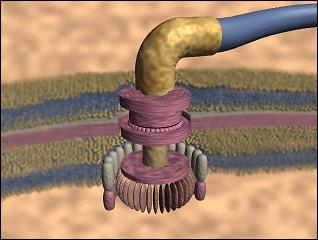
T.S. ELLIOTT said,"We shall not cease from exploration, and the end of all our exploring will be to arrive where we started and know the place for the first time."
from http://johnsonma
and

The book The Privileged Planet, by Guillermo Gonzoles, along with the DVD of the same name advance the wonderful Thesis of the authors that the conditions within the Cosmos that make the earth ideally suited for intelligent (human) life are also the conditions that are optimal for scientific observation of that same Cosmos, suggesting that there was a purpose in the formation of our Universe not only for the creation and nurture of human life, but for us to be able to observe the handiwork of the Creator.
The carving posted with this blog shows a relic of the Four Evangelists at the center of the Milky Way. On the macro scale, the Milky way shows these admirable traits of the Universe. The Earth exists half-way between the outer edges of the Milky Way and the inner Center. The Galactic Center is too full of catastrophic galactic events such as supernovae, and is not too friendly to life of our sort, whereas the outer reaches of the Galaxy do not have enough of the heavy elements , especially iron, which is essential to the earth's magnetic core, and the electromagnetic field it generates for the earth to shield us from harmful effects of solar radiation.
At the same time , the earth does not exist within a spiral arm, but slightly outside of one the Saggitarius arm, so that we are able to discern more easily the configuration of the Galaxy and to gaze into the deeper heavens beyond the Galaxy, so noting the incomprehensible immensity of the Universe, and the even more Incomprehensible Greatness of the God who thought this into being.

Some might note that the arms of the Galaxy to the left and right are morphing into the ultramicrostructure of the bacterial flagellum. Bacteria with flagella have built within themselves a machine with all the parts of of an outboard motor. Rotors, propellors, the whole works. The bacterial flagellum is an outstanding example of irreducible complexity, a term advanced by Michael Behe, in his book, Darwin's Black Box, which expresses the concept that biological systems are too complex to have evolved by chance from more simple ones. The function of the bacterial flagellum contains any number, perhaps 20, extremely complex structures, that must exist for the flagellum to work at all. Darwin himself said "If it could be demonstrated that any complex organ existed which could not possibly have been formed by numerous, successive, slight modifications, my theory would absolutely break down."
--Charles Darwin, Origin of SpeciesFor more details on irreducible complexity and the bacterial flagellum go to

No comments:
Post a Comment